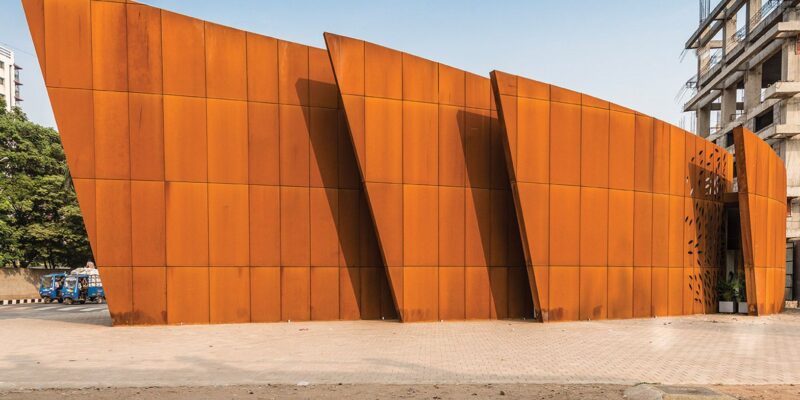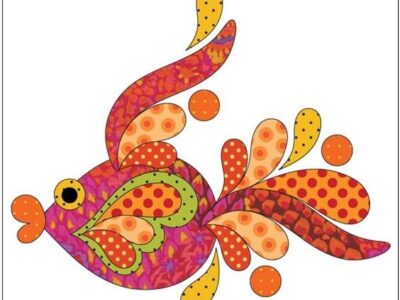
Corten A steel plate, also known as weathering or atmospheric corrosion-resistant steel, is a type of steel alloy renowned for its distinctive appearance and exceptional resistance to atmospheric corrosion. Developed in the 1930s by the United States Steel Corporation, Corten A steel has since gained popularity in various architectural, construction, and outdoor structural applications due to its unique aesthetic appeal and durable performance in harsh environments.
Composition of Corten A Steel Plate
Corten A steel plate primarily comprises iron (Fe) as the base metal, with specific alloying elements added to enhance its corrosion resistance and mechanical properties. The key alloying elements in Corten A steel include:
Copper (Cu): Copper is the primary alloying element in Corten A steel, constituting approximately 0.20% to 0.50% of the steel’s composition. Copper acts as a corrosion inhibitor, forming a protective oxide layer on the surface of the steel when exposed to atmospheric conditions. This oxide layer, known as the patina, develops over time and serves as a barrier against further corrosion, thereby extending the service life of the steel.
Chromium (Cr): Chromium is another essential alloying element in Corten A steel, typically present in small quantities ranging from 0.50% to 1.25%. Chromium enhances the steel’s corrosion resistance by promoting the formation of a stable oxide layer, similar to its role in stainless steel. The presence of chromium contributes to the self-healing properties of Corten A steel, allowing it to maintain its protective patina even in aggressive environments.
Nickel (Ni): Nickel is sometimes added to Corten A steel to improve its toughness and impact resistance, particularly in structural applications with critical strength and durability. Nickel also enhances the steel’s resistance to stress corrosion cracking and improves its weldability, making fabricating and joining Corten A components easier.
Phosphorus (P) and Sulfur (S): Phosphorus and sulfur are impurity elements typically found in trace amounts in Corten A steel. While phosphorus can increase the steel’s strength and hardness, excessive sulfur content may reduce its ductility and toughness. Therefore, strict control over phosphorus and sulfur levels is essential to ensure the desired mechanical properties of Corten A steel.
Properties of Corten A Steel Plate
Corten A steel plate exhibits various properties that make it suitable for various applications, particularly in outdoor and exposed environments subject to atmospheric corrosion. Some key properties of Corten A steel include:
Corrosion Resistance: Corten A steel is renowned for its exceptional corrosion resistance, particularly in atmospheric environments containing high moisture levels, oxygen, and pollutants. The presence of copper and chromium in the steel’s composition enables the formation of a protective oxide layer, or patina, on the surface, which acts as a barrier against further corrosion. This natural patina develops over time, evolving into a distinctive reddish-brown hue that enhances the aesthetic appeal of Corten A steel structures.
Weathering Characteristics: Corten A steel exhibits unique weathering characteristics, changing appearance and surface texture when exposed to environmental conditions. Initially, the steel may exhibit a shiny, metallic appearance, which gradually transitions to a weathered, rust-like patina over time. This weathering process is influenced by humidity, temperature fluctuations, and exposure to salt spray, resulting in a natural and dynamic aesthetic that blends harmoniously with the surrounding landscape.
High Strength: Corten A steel retains high mechanical strength despite its weathering properties, making it suitable for structural applications requiring load-bearing capacity and durability. The steel’s high tensile strength and yield strength enable it to withstand heavy loads, seismic forces, and other structural stresses, ensuring long-term structural integrity and stability.
Weldability: Corten A steel exhibits good weldability, allowing easy fabrication and construction. However, proper welding procedures and techniques must be followed to minimize the risk of weld-induced corrosion and maintain the integrity of the protective patina. Welding consumables and procedures compatible with Corten A steel, such as low-alloy electrodes and preheating, are recommended to achieve sound welds with minimal distortion and residual stress.
Low Maintenance: One of the significant advantages of Corten A steel is its low maintenance requirements compared to conventional structural steel. The self-protecting nature of the steel patina eliminates the need for painting, coatings, or other corrosion protection measures, reducing ongoing maintenance costs and environmental impact.
Conclusion
Corten A steel plate offers a unique combination of aesthetic appeal, corrosion resistance, weathering characteristics, high strength, and weldability, making it an attractive choice for architectural, construction, and outdoor structural applications. By understanding the composition and properties of Corten A steel, designers and engineers can harness its inherent advantages to create durable, sustainable, and visually striking structures that withstand the test of time in diverse environmental conditions.








